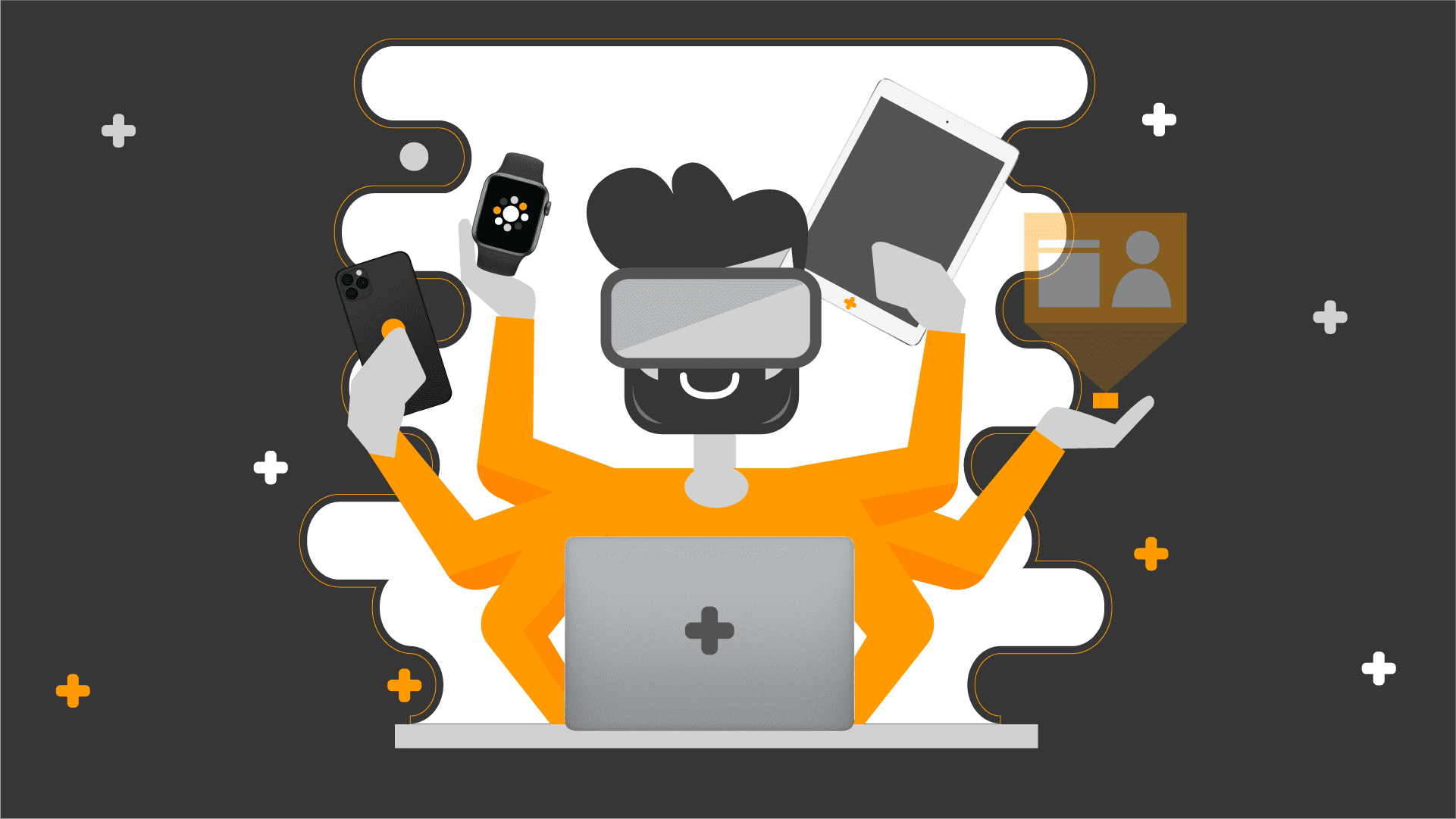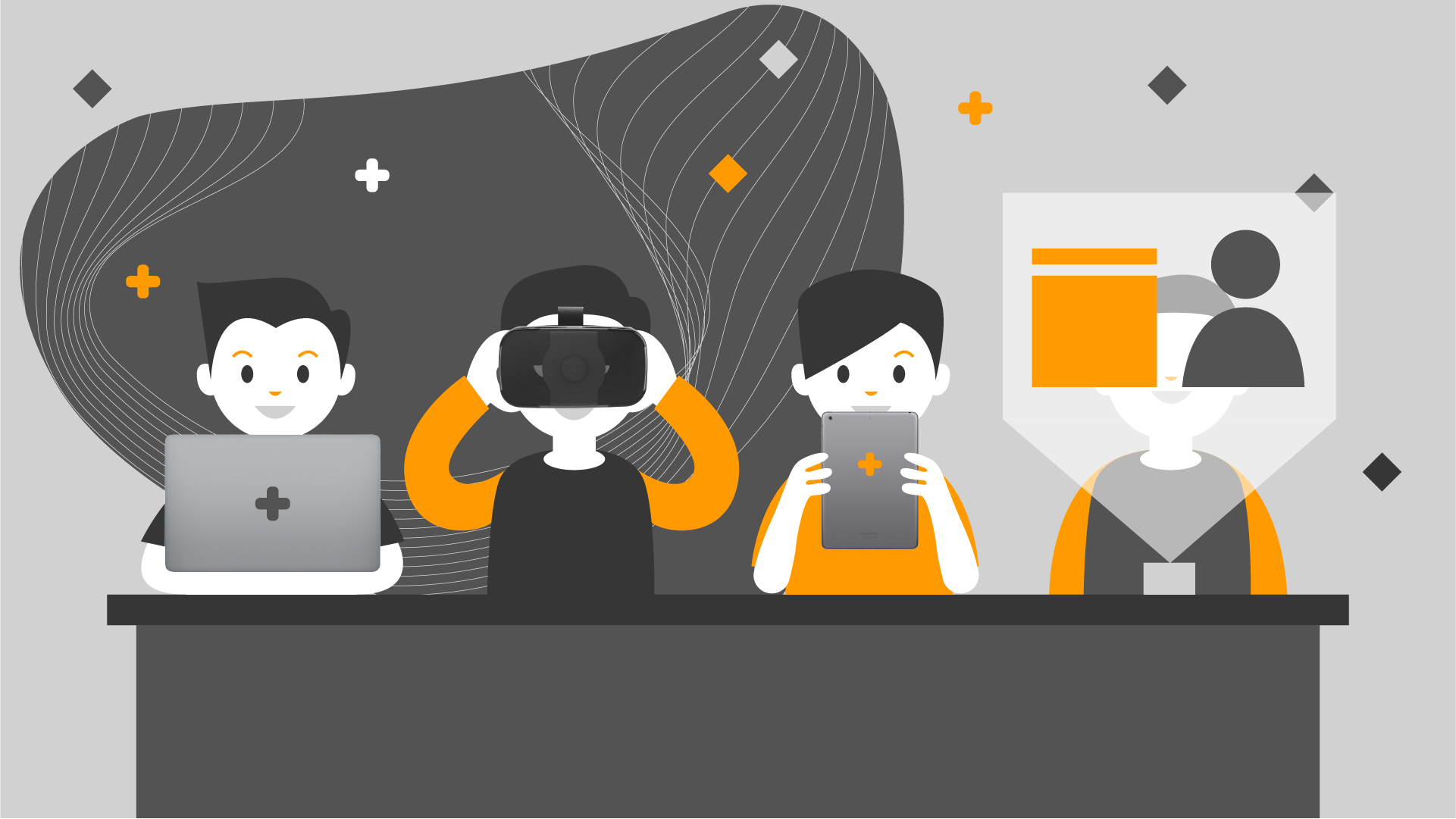What Are Some Technologies You Can Use In A Presentation? Including Pros and Cons.

Technology mostly shows it’s positive and negative features at the same time, but we cannot deny that it is hardly possible to ignore. In the world of presentation, we have already left the time we can leave technology behind. Now the questions are which technology to use and to what extend to include them in presentations.
When we mention the use of technology in a presentation, actually we are talking about a wide scale because everything from the animation on the screen to the hologram on the scene is a technological product. In fact, even a presentation design made of only texts means the use of technology.
Microsoft PowerPoint is older than 30 now. In addition, virtual reality (VR) and augmented reality (AR) are increasing their prevalence. By 2020, the VR and AR market is estimated to reach $150 billion. Holograms and 3D animations also stand out as other technologies used to enrich presentations.
As a designer who designed presentations for different sectors, I had the chance to see how powerful the use of technology was for storytelling and engagement. However, on the other hand, when it was used incorrectly, I realised how technology dominates the whole presentation and prevents the message from reaching the audience.
What should the ones who want to use technology in their presentation and to confront the audience with the new generation presentations care about? What technologies should we use and where? Let’s talk now about the advantages and disadvantages of using technology in the presentation and take a look at what technologies we can use to design an effective presentation.
More attractive and easy-to focus
Presenters and presentation followers know that sometimes it is a painful task to keep attention alive during the presentation. Therefore, people who present and design the presentation should take this issue to the center. If the audience doesn’t really follow you, what you say loses importance.
One of the biggest advantages of the technology used correctly in the presentation is that it attracts the attention and prevents the distraction. In parallel with your project, you need to determine the most suitable one among many ideas such as 3D visualization of data accumulated over the years or creating interactivity through a mobile application.
Better-explained messages
Especially when the audience is not an expert in the subject matter, you need to make sure that what you say is explanatory. You can perform a more descriptive presentation using the possibilities of technology instead of just telling it with speech and text projected to the screen. For this, you can take advantage of visuals such as interactive graphics and 3D models created with real-time data.
May cause distraction
The use of technology in the presentation can be used to allow the audience focus easier as well as it may cause distractions. Application mistakes, such as excessive use of technology or incorrect creation of interactive fiction, disrupt the focus of the presentation, making it difficult for you to draw the audience’s attention to the desired points. Using the optimal technology and cooperating with experienced presentation designers must be your bullet points to consider in order to stay away from this disadvantage.
May disrupt the presentation flow
If the use of technology is in more complex structures than you can control through short rehearsals or repetitions, the presentation flow may be out of control. The person on stage must keep the whole environment under control for a successful presentation. This means that they must be able to control the technology used. For example, if you don’t have time to rehearse, instead of controlling your presentation with radar touch or similar 3D based motion control systems, you should choose to control your presentation with an interactive armband or transparent holographic display.
What technologies can you use for effective presentation design?
You need to choose the right technology and apply it to your presentation in the best way for an effective presentation design. The first thing to do is to find out what the options are. Now, let’s take a look at some of the technologies that you can take advantage of in the presentation design.
Augmented Reality
Augmented reality is actually a highly descriptive name because augmented reality, abbreviated as AR, expresses digitally enriched reality with technology.
The basic skill of AR technology can be summarised as rendering a static image and location alive by animating or graphically enriching it. For example, you can scan a movie poster with the AR app on your phone to watch the trailer of the movie or scan a product ad to see a pop-up that gives information about the product.
The use of AR in a presentation makes it more impressive, making it easier for the audience to integrate into the presentation because, with augmented reality, you give the audience an experience beyond their real perception.
Virtual Reality
Virtual reality (VR) offers real-time simulation and interaction. There is no distracting element for the audience who join the simulated world with equipment that covers the ear and eyes. The entire hall is in the virtual world you set up. This eliminates the possibility for your message to be missed.
The VR allows audiences to interact with the surrounding objects and direct the presentation while providing an environment in which they can move 360 degrees. Therefore, using the VR, the lifespan of your message will be longer and more impressive.
3D Technology
3D technology enables you to achieve a much more realistic visualisation and a rich presentation. In particular, PowerPoint’s 3D model feature increases the number of users taking the advantage of 3D technology in presentations, but you can use 3D images in many different presentation design applications. Moreover, you can get more impressive presentation by enriching 3D images with animation.
Interactivity
There is no doubt that interactive presentations are very impressive. So, you can benefit from the equipment such as Leap Motion, RadarTOUCH and Myo Armband.
Leap Motion lets you control the presentation by simply moving your fingers without touching anything. Especially when combined with VR or AR, a unique experience comes out.
RadarTOUCH is a laser-based technology that allows interactivity on giant screens and projection walls. The multi-touch feature allows you to design enjoyable presentations with technology that enables multiple users to use them.
Myo Armband allows you to control digital technologies wirelessly. The high-tech bracelets measure the electrical activity in your muscles to detect 5 different movements you do with your hand. When used on the stage, Myo Armband helps you grasp the audience’s attention.
Hologram
On the stage or holographic tables, you can easily impress the audience using hologram technology. The 3D hologram is one of the most impressive ways of showing a physically non-existent object as if it was there, and is a commonly used new media product.
Remote Presentation
Technology has become such a pitch that we can say that distances are no longer important. Many applications such as GoToMeeting, WebEx, Zoom, Skype for Business and Personify Presenter now allow us to present even from miles away.
Final words
The most important issues for presentations are to attract the viewer’s attention, communicate the message effectively, and be descriptive. For this reason, you may consider to benefit from the opportunities offered by technology. VR, AR, 3D, Hologram, as well as the applications enabling remote presentation and interactive presentation can help you with that. However, the misuse of the technology can lead to undesirable results while if used correctly, it supports you to get lasting efficiency from your presentation.




